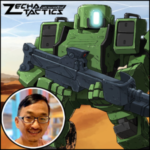In Part Two of this two-part interview, Richmond Lee, the Art Director for Zecha Tactics, goes into detail about mecha design as well as the tone and emotions he hopes to evoke in the Zecha Tactics world.
If you missed the first part of the interview, be sure to check out the first part here.
Zecha Tactics is a mecha game, so an essential element of the design process is designing the mechs themselves. How do you go about designing original mecha for the game? How do you plan to set the design apart from other mech games, movies, and anime out there?
When we started, I was just doing basic mecha concepts. I realized I’m a fan, and I’m okay at designing mecha, but there are other people out there who specialize in it. So I just thought to bring these people onto the team, because I didn’t have to do it myself.
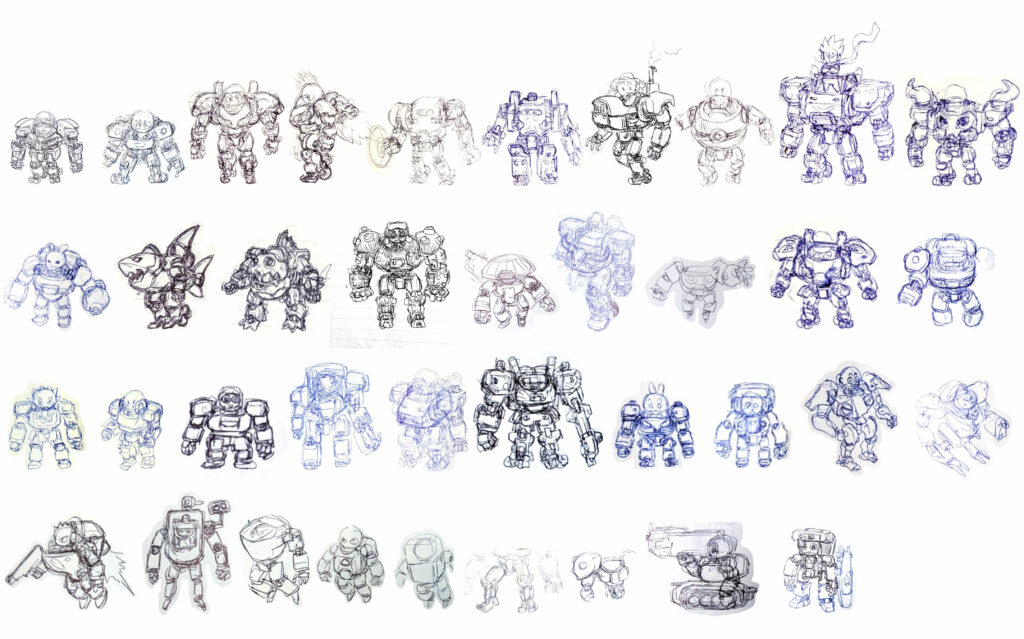
When I thought about who I would really like to work with, I immediately thought of Shinya Mizuno. He’s known for posting works online, and also has a really cool book that was published by Hera Publishing. Mizuno has a very unique style and I just love looking at this guy’s mecha.
Even if there’s no story, there’s not like a comic or an anime, but just looking at them, I want to spend time with them. I would love to see that in the game. His style is very idiosyncratic.
As a designer, Mizuno knows his history, and you can see elements of other mecha series in his designs. But he brings it together in a really unique way, which I think will naturally happen. If anyone does art sincerely, your own natural tendencies will come out.
For Mizuno, his natural tendency is that he makes everything weirdly cute. Even our green mecha, it’s inspired by VOTOMS. It feels like a tank, but something about it is kind of cute, and not in an obvious way. It’s not like a joke. Somehow this man imbues everything he does with a sense of cute. Cute like when you see like an old cat, not like a kitten. Everyone likes a kitten, but when you see a fat-tired old cat, that’s its own sense of cuteness too. Mizuno adds this ‘weird cute’ to stuff. I really like that about his work. I feel like that’s the “X” factor that makes people feel like there’s something different about Mizuno’s designs.
This is also the first game to translate Mizuno’s artwork into a video game. What are the challenges faced in translating mech concept sketches into 3D models?
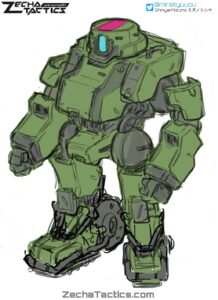
That is a great question. There are pros and cons to 2D and 3D. For 2D, in some ways, it’s harder because you have to think very dimensionally. You have to train many years before you can draw dimensionally. But also, you can cheat a lot more. So Mizuno just sends us one concept drawing for a mech because he’s busy doing other stuff. He doesn’t have time to draw the full turnarounds.
The challenge there is to take this concept drawing that works from this one angle. Mizuno draws very intuitively, he’s very intuition-driven. We have to take that drawing and then translate it into 3D. So the process is we still draw it by hand. You have to draw the front, side, and back view and make sure it all lines up. These are the “orthographic views” or the “turnaround views”. During this stage, it’s common to find things that work from the original angle in the concept drawing, but don’t work from a different angle. So we still have to do a lot of redesigning to adapt it into 3D.
When it goes to 3D, naturally humans will draw things imperfectly, so the 3D artist might need to do further interpretations. There’s a lot of back and forth there, but the key is to capture the spirit of that original drawing. I know that it sounds very fluffy, but if you pull it off, it’s a very real thing.
If you compare our 3D green mecha to the original concept drawing, the exact particulars of the design are not the same actually. There are a lot of little differences. But at a glance, it feels the same and that’s the most important thing.
One of our earlier passes was a very literal take on his drawing. It was very literal and very mathematically accurate, but when we modeled it, it didn’t look right at all. We still had to make lots of little adjustments. It’s an art as much as it is science.
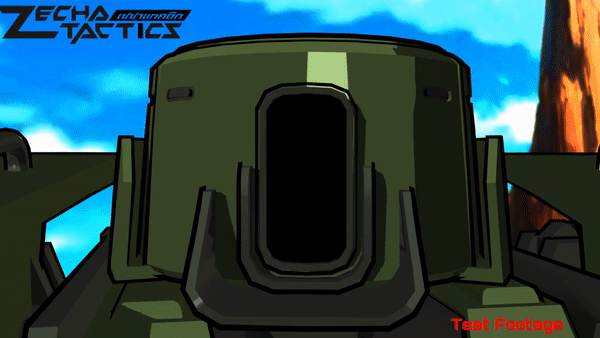
How do you come up with a storyline for the world that fits with the visual design of Zecha Tactics? What sort of tone will the game have?
We decided from the start we wanted to have a kind of upbeat feeling to the game. Even where the game takes place, there’s fighting and war and bad stuff, but we wanted it to be mostly an upbeat adventure. We were really inspired by a lot of shonen manga, classic Shonen Jump comics like One Piece, Dragon Ball, and YuYu Hakusho. The sort of thing where the characters go through hardships, but it’s still fun. You don’t feel like you’re being tortured when reading it.
For instance, we’re really inspired by VOTOMS for the mecha design, but not for the tone. That series is very dark. It’s as gritty as any Vietnam War movie, and we’re not going to go that dark.
The feeling I want Zecha Tactics to have is inviting. That’s what I like about Shinya Mizuno’s works; it’s just really fun to look at it and you want to spend time with it. To look at more of it, that’s the feeling I want our game to have.
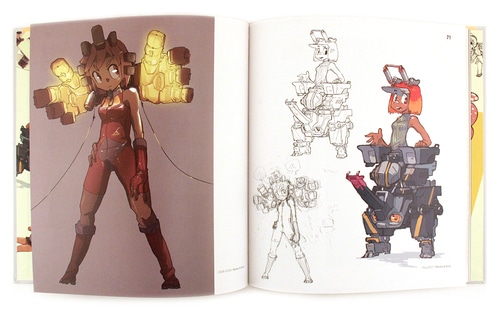
Everything about it should be inviting. It should be nice to look at, the animation should feel really solid and snappy. Even though it’s a turn-based game, when you click and give a command, it needs to feel good.
All of that comes together to make a very inviting game. Those are the kinds of games I like, those are the games I keep coming back to. I’m the kind of guy that just keeps playing the same games over and over, rather than a new one every week. So I want to make a classic game that people come back to always.
I just hope it’s exciting. That’s the main thing. Zecha Tactics is an RPG so we’ll be able to hit lots of different emotional beats, but I hope that it remains exciting and engaging.
What kind of emotions are you hoping to evoke when playing Zecha Tactics?
First, it just needs to be fun. You need to draw people in with the fun. Then it needs to be graphically impressive. You have to wow people right away. Especially these days, everyone has a back catalog of literally 100 games on Steam. So you’ve got to impress them. So it needs to be fun, it needs to be immersive, and it needs to have that wow factor.
But then after that, the games that people really remember are the ones where you hit them with an emotional punch. It’s only after you’ve made the game fun that you can also make people angry or sad.
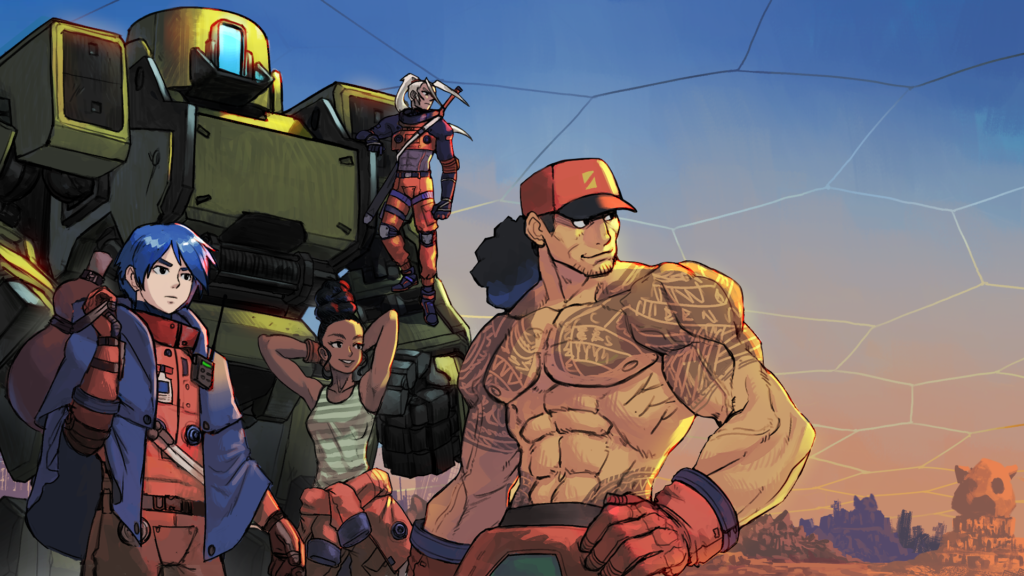
Finally, and this is very highfalutin, but I hope eventually people play the game enough that it will make them feel like they want to help people. I hope that helping people in the game feels good, and maybe that could trickle down to real life too.
That’s a wrap to our two-part interview with Richmond Lee! His insights have been invaluable to the development of Zecha Tactics, and we are all very much looking forward to seeing how Zecha Tactics will turn out!
Sign up for the Zecha Tactics newsletter to get an exclusive wallpaper and regular updates on Zecha Tactics development!
Interviewed by Egg, Community Coordinator for Bit Egg Inc.
